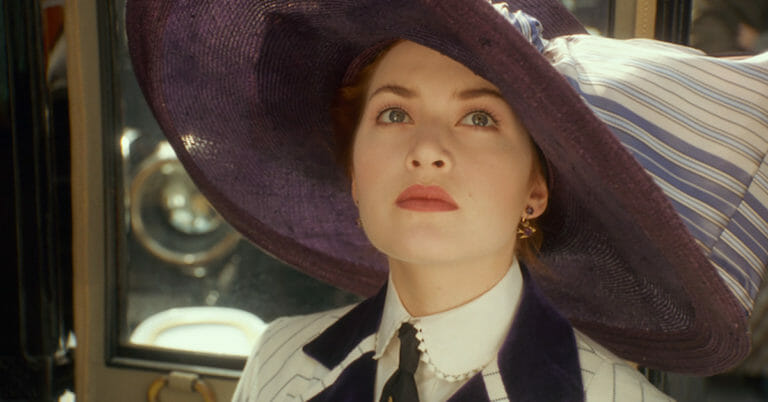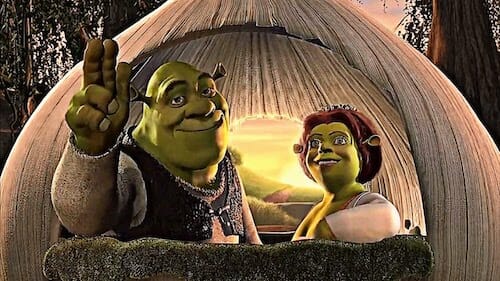By Ken Miyamoto · May 20, 2019

What are the main stages of character development in The Hero’s Journey and how can screenwriters use them to develop their characters?
Welcome to our ongoing Learning from the Masters and Industry Insiders series where we seek out and feature excellent videos, interviews, and discussions of the art, craft, and business of screenwriting and pull the best words of wisdom, writing tips, and screenwriting advice.
Here we feature the Indie Film Hustle video Screenwriting: The Six Stages of Character Development where Michael Hauge discusses the topic.
“In the setup, that first ten percent [of the screenplay]… this is where your hero exists completely and totally within [their] identity.”
This is where we see the character in their world within their current state of being.
Shrek is just an angry ogre that wants to be left alone.

Rose in Titanic is embedded within that comfort — and constraint — of wealth.

After that first ten percent of the story, the hero is presented with an opportunity.
“For the next fifteen percent of the film, in that new situation, not only are they getting used to the new situation, your hero is going to get a glimpse, a peek, at what life would be like living in his essence.”
Rose is getting comfortable with living on the Titanic, and she begins to see the world of expression and freedom that Jack lives within as she looks at his drawings.

Shrek is getting a glimpse at what it would be like to finally be accepted when all of the fairy tale characters override his land. They accept him as one of their own, their hero. He does reject the call to adventure at first, but he gets a glimpse of what it would be like to be the hero — to be wanted and needed.

“For the next stage, the hero is straddling the fence… one foot into essence, one foot back. Not fully committed.”
Shrek goes to the castle and demands his land back. He fights off the guards and begins to get a feeling of acceptance. And when he’s given the task of going to rescue the princess from the tower, he’s off on the adventure, but he’s still within his original identity of being the angry ogre who just wants to be left alone.
Rose has had a night out with Jack and has tasted the care-free world.

“On the inner level, once the character passes the point of no return, they fully commit to living in their essence… and now the outside world starts coming in.”
Shrek meets the princess and falls in love with her. He’s committed to her. But then she’s taken away. He feels rejected. And this is where the hero attempts to go back to their original identify for a brief moment.
Rose has had a magical night out with Jack, but the next morning she still holds back, rejecting Jack’s tempting charm. She reverts back to her protected wealth lifestyle as Jack begs her to understand that she’s not who she is trying to be in that world.
“What all heroes must then say in stage five [is], ‘Wait a minute. This sucks. This may have worked for me at the beginning, but I’ve had a glimpse. I’ve had a taste of who I truly am. This doesn’t work for me anymore.”
Rose commits to Jack after she realizes that she’s not happy with her husband-to-be. They have a night together where Jack draws her in the nude, they then run off together, only to be chased by her fiancé’s manservant. They then make love in a car right before the ship hits the iceberg.

Shrek is now fully committed to the princess, and he’s ready and willing to unite the fairy tale characters and fight off the evil Farquad.
“The aftermath is the part of the story where we say, ‘Okay. This is now the new life the character is going to live after fully realized who they truly are.'”
Shrek leaves the swamp behind to go off into the sunset with his love.

Rose, after being forced to say goodbye to Jack after his death, survives. When she sees her fiancé searching for her on the recovery boat, she hides her face. This is when she has fully embraced her essence and has decided to take on Jack’s last name to go live the care-free life he showed her that she could have.

Download the screenplay for TITANIC here for free
Download the screenplay for SHREK here for free
Note: We have taken on a different approach to the Titanic character stages compared to Michael Hauge, but, as is always the case with screenwriting theory, it’s how you look upon it with your own perspective.
Enjoy some further elaboration by watching the full video below!
For all the latest from The Script Lab, be sure to follow us on Twitter, Facebook, and Instagram.
And become a member of TSL 360 to enjoy the LARGEST screenwriting education content library, featuring masterclasses, deep-dive interviews, and lectures from Academy Award-winning screenwriters, TV show-runners, producers, literary managers, agents, studio executives, and leading educators – all in one place.